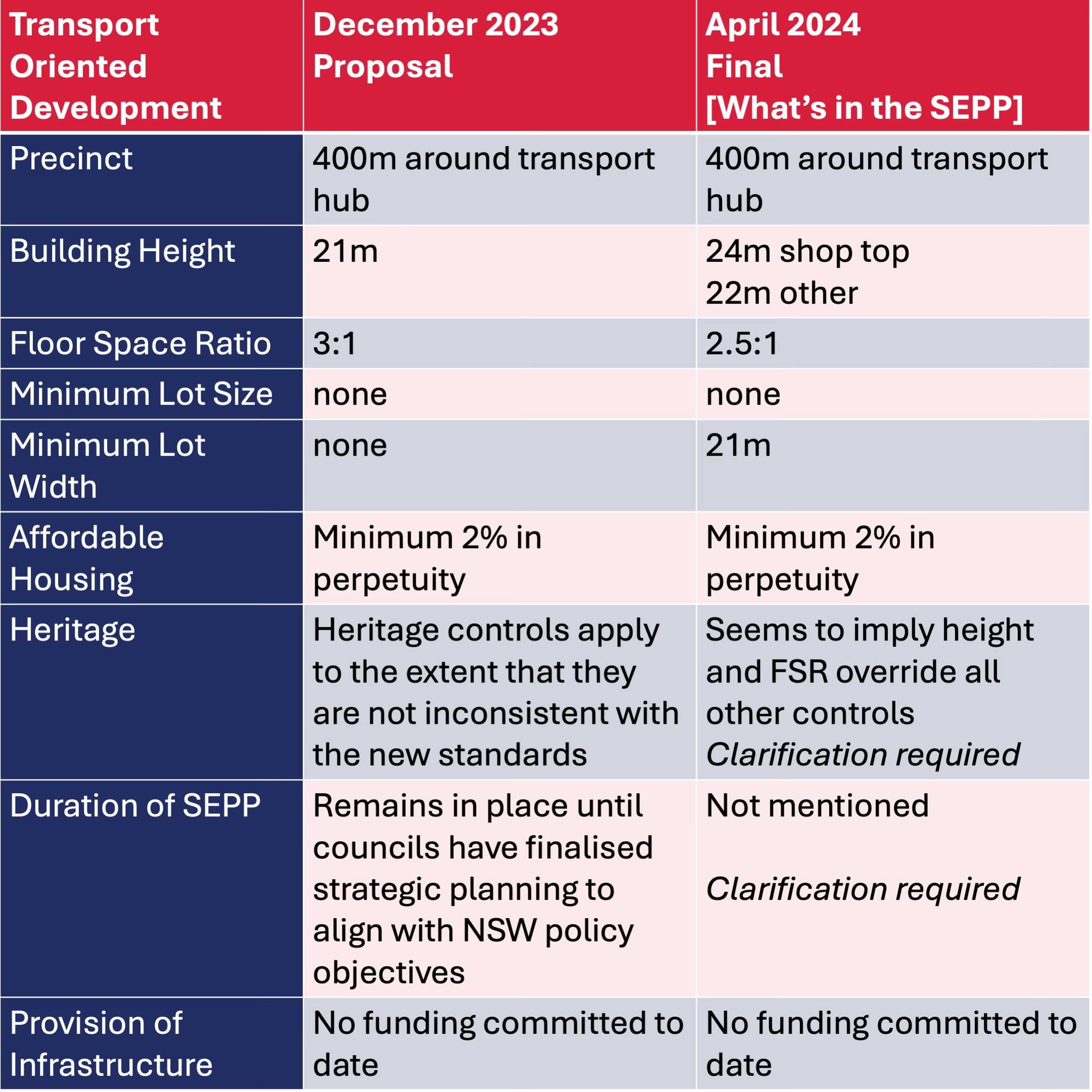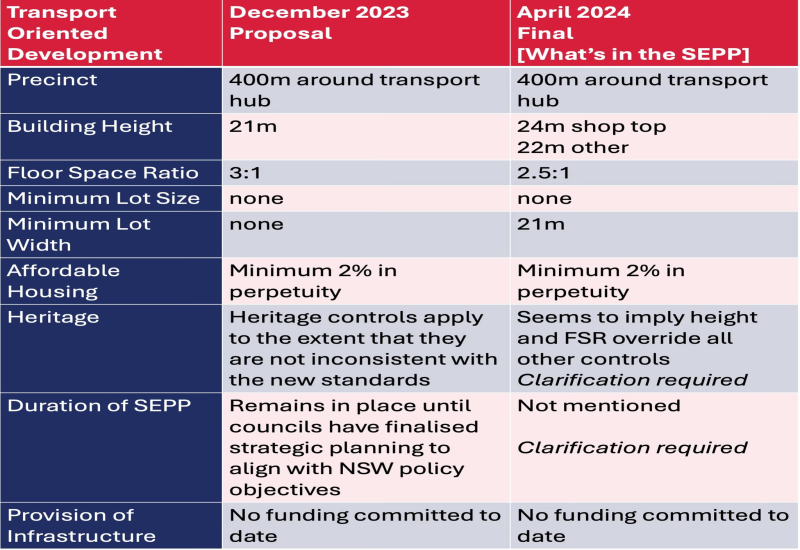Initial thoughts on yesterday’s Transport Oriented Development (TOD) Part 2 provisions.
Please note that I’m talking about what’s in the legislation itself, not what’s in a media release (which is not legally binding). https://legislation.nsw.gov.au/view/pdf/asmade/epi-2024-135
The 400m radius remains the same. Some would question whether it is realistic when TOD Part 1 uses a 1,200m distance.
The changes to height and floor space ratio sound gentler but in reality do not fix anything. What’s proposed is equivalent to the Lindfield IGA development with one less floor. There will still be no setback and it won’t achieve Greater Sydney’s 40% urban canopy target by 2036. The reduction in FSR will also mean that the any proposed development is less feasible, resulting in a slower rate of housing delivery.
The minimum lot width is a welcome change and will result in better outcomes for future residents.
2% minimum affordable housing target is very low. The Inner West for example has 15% in perpetuity and the Northern Beaches has targeted 10% in selected areas.
The SEPP itself is silent on heritage, and there are some provisions which might suggest the heritage conservation areas are still under threat. Further clarification is required.
It is also unclear whether a subsequent council-led change to the Local Environment Plan could result in the removal of the SEPP. What was proposed in December suggested that this was an option, but the SEPP that was gazetted yesterday does not provide for this. I will ask the Minister on Thursday.
I expect the state to raise $1.5Bn of Housing and Productivity Contributions from these developments in 37 precincts, but nothing has been committed to improving local infrastructure. This is different to Part 1 where $520m was committed for critical road upgrades, active transport links and public open spaces (approx. $10,800 per dwelling). I will be asking the Minister on Thursday re: infrastructure support.

